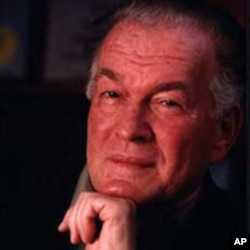Many analysts were not surprised last week when discouraged protesters in Hama, Damascus and other Syrian cities began carrying placards and banners advocating for foreign intervention.
Syrians are in the sixth month of a nonviolent uprising that has left them battered and bruised by a regime intent on staying in power, no matter what. More than 2,000 Syrians have died and countless others have disappeared into the black holes of the Syrian prison system, according to organizations monitoring the situation in the country.
Meanwhile, half a continent away, Libyan rebels, fortified by NATO weaponry, last week took Moammar Gadhafi’s compound in Tripoli, sending the dictator and his family into hiding.
While understanding that some Syrian protesters might have begun questioning the merits of their own peaceful rebellion, its organizers and some policy analysts say the demonstrators' best course of action would be to remain on the nonviolent path they have chosen.
The Syrian Local Coordination Committees (LCC) and other Syrian opposition groups have been quick to denounce calls to an armed rebellion, insisting that nonviolence is the only effective means to defeating the regime of Bashar al-Assad.
In a statement to the Syrian people released earlier this week, the LCC cautioned that militarizing the revolution would minimize popular support of - and participation in - the uprisings. They warned that taking up arms might weaken the seriousness of the inevitable humanitarian catastrophe that would result from a confrontation with Assad’s military. The LCC also forecast that an armed struggle would rob Syrian protesters of their “moral superiority” over the regime.
“The objective of Syria’s Revolution,” the statement reads, “is not limited to overthrowing the regime. The Revolution also seeks to build a democratic system and national infrastructure that safeguards the freedom and dignity of the Syrian people."
Violence cheapens causes
Hozen Ibrahim, spokesman for the LCC, sympathizes with Syrians who are dispirited by the ongoing violence and rising death toll. “But that doesn’t justify arming ourselves or going for the Libyan scenario,” Ibrahim said, “because it’s not going to work in Syria. For us, the uprising is a peaceful one to gain freedom for Syrian people. It is not to fight or make a civil war.”
Arguing in defense of keeping the revolution nonviolent, Ibrahim cites the example of the two Palestinian intifadas. “The first one was peaceful, and they gained the solidarity of the international community, they reached some goals they were fighting for. However, in the second intifada, some Palestinians armed themselves, they fought against Israel and they lost more than they gained.”
There is a reason for that, says Dr. Stephen Zunes, Professor of Politics and International Studies at the University of San Francisco and Chair in Middle Eastern Studies. “When you have movements that have both nonviolent and violent elements, there is a tendency to treat the entire movement as violent,” he said.
Zunes argues that while it’s tempting to attribute the rebels' success in Libya to NATO intervention, in point of fact, nonviolence worked in the initial days of the uprising. “In less than a week,” Zunes said, “they had liberated most of the eastern part of the country and a number of western cities - and even some neighborhoods in Tripoli. But with the shift to armed struggle, they were basically taking Gadhafi on at his strongest point.”
Zunes also argues that it was during the unarmed stage of the conflict that Libya witnessed the greatest number of resignations and defections among regime and military circles. Before NATO intervened, he says, thousands of soldiers defected or refused to shoot at civilian protesters.
However, after NATO stepped in, the nature of the rebellion shifted. “In general,” Zunes said, “security forces are much more likely to stay loyal [to a regime] if they are being shot at, as opposed to being ordered to shoot into crowds of unarmed demonstrators.”
There’s a lesson there for Syria, says Zunes. “As the nonviolent struggle wears on, the middle class and certain privileged groups that have benefited from the Assad regime, while they might not like Assad that much, are starting to defect.” And as the economic impact of disruptions and international sanctions begins to hit them, Zunes says, he sees signs that the middle class is beginning to notice that the opposition is remarkably nonviolent, despite “severe provocation” by the regime.
“They’re thinking to themselves, ‘Maybe if these guys take over, it won’t be so bad,’” Zunes adds.
No blanket policy
Dr. Fawaz Gerges, Director of the London School of Economics’ Middle East Center, disagrees with the concept of a one-size-fits-all approach to the rebellions in the Middle East and disputes Zunes’ assertion that Libyans could have achieved their end goal without NATO’s help.
Gerges points out that Libyan protesters began their revolt peacefully. “If there is one particular feature that distinguishes almost every single revolution in the Arab world, from Tunisia to Egypt to Yemen to even Libya and Syria, it's basically the opposition to the use of armed force, either internally or externally.”
In the case of Libya, says Gerges, it was the use of massive force by the Gadhafi regime that “forced” the Libyans, “against their own will to call on the international community - the Arab states, Turkey, NATO and the United States - to help them survive, as opposed to really empower the opposition forces.”
Libyan rebels did not have the means, resources, skills or training to march to take on the Gadhafi regime, Gerges adds. “I think that the reality is NATO paved the way, cleared the way, neighborhood by neighborhood, village by village, city by city, for the rebels.”
If that worked in Libya, then would it also apply to Syria?
Gerges’ answer is an emphatic ‘no,’ for several reasons: “The leading opposition forces in Syria are opposed to foreign intervention in all its aspects, period,” he says. “Point two, Syria differs radically from Libya. Any military intervention in Syria would be disastrous for the Syrian people, for the region, and its implications would transcend the region as well.”
“Thirdly,” Gerges said, “the Syrian protesters know very well they must take ownership of their revolution. It will take time, it will be prolonged, it will be bloody, it will be costly and it will take, in fact, years as opposed to months. But the reality is there is no other way for them, given the complexity and the difficulty of the Syrian case.”
Does nonviolence work?
If it is a given that Syrians face the regime on their own and without resorting to violence, do they stand a chance at bringing down the Assad regime and achieving true democracy?
Dr. Gene Sharp thinks so. Founder of the Albert Einstein Institution and Professor Emeritus of political science at the University of Massachusetts Dartmouth, Sharp is widely considered the “grandfather” of nonviolent struggle - a title that earned him the ire of dictatorships across the globe. In his “primer” on peaceful rebellion, From Dictatorship to Democracy, Sharp defines and sets out a blueprint for political defiance, one small step at a time.
Sharp believes Syrians can achieve change and, indeed, have done so already. The mere fact that they oppose the regime weakens its leader. And weakened dictators, according to the scholar, generally resort to stronger methods of repression, which backfires and weakens them even further.
“Dictators,” Sharp says, “will do all kinds of things to get you to stop the resistance, and it’s the resistance that has given democratic Syrians leverage.”
Sharp stresses that if a nonviolent movement is to be successful, it must remain nonviolent. “Violence is actually what the dictatorship wants you to do,” he said. “That’s why, for dozens and dozens and dozens of years, dictators have sent their agents into the revolutionary movements, in order to provoke them into violence.”
Once rebels become violent, says Sharp, regimes can justify the use of force to put them down.
The blueprint
Protests, according to Sharp, are beneficial to any revolution. They send a strong message to the oppressive regime. They also earn international attention and sympathy for the participants. The downside, however, is that they often result in high casualties. “Protest is good, but it’s symbolic,” Sharp says. “Protests alone will not bring down a dictator. You have to go to the sources of power and you’ve got to take those away.”
Given the muscle of the Assad regime, this might not be easy to achieve. Sharp, however, believes that it is the people who give a dictator his muscle. As long as people believe that the regime is legitimate, he says, as long as they cooperate with it and obey it, as long as they support the regime by providing it with tools, knowledge, resources, they are empowering that regime.
In his writings, Sharp catalogues at least 200 recognized methods of nonviolent “weapons,” ranging from sit-ins to strikes to mock funerals and non-cooperation in the workplace. “If the civil service no longer carries out their duties,” says Sharp, “if the legitimacy of the regime is denounced by the religious and moral leaders, if the police don’t find people to [carry out arrests], and if finally the military does not obey, then the regime’s power is gone.”
Key to weakening a dictator, Sharp says, is communication with a regime’s military and security sectors. “Troops should learn that the struggle will be of a special character designed to undermine the dictatorship but not to threaten their lives," he writes.” Sharp suggests that in the end, troop morale will gradually lower and their allegiance gradually shift from the ruler to the populace.
But this does not mean that nonviolent resistance is risk-free. Tragically, casualties, says Sharp, are inevitable; however, he stresses that “they will be far fewer than the casualties in military warfare.”
As evidence, Sharp cites the death tolls of this Arab Spring: While some 2,000 to 3,000 have so far died during the Syrian uprising this year, tens of thousands died in the armed struggle to oust Gadhafi in Libya.
And there is an other argument proponents of nonviolent uprisings use: when rebels take over by force, they tend to go on to rule by force. Or, as Stephen Zunes puts it, they become convinced that true power lies in their weaponry.
Does this then mean that rebels who take up arms are doomed to build their governments akin in pattern to those of former dictatorships? Yes, says Sharp, if they are not careful.
In more general terms, while there appears to be no single effective formula for overthrowing dictators, experts seem to agree on one point: people have at least as much power as the dictators who oppress them.
>> Vote in our poll for what you think the protesters should do <<





















